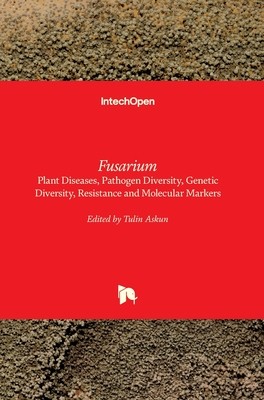
- We will send in 10–14 business days.
- Publisher: IntechOpen
- Year: 2018
- Pages: 180
- ISBN-10: 1789233186
- ISBN-13: 9781789233186
- Format: 17 x 24.4 x 1.1 cm, hardcover
- Language: English
- SAVE -10% with code: EXTRA
Fusarium (e-book) (used book) | bookbook.eu
Reviews
Description
Fusarium species are ubiquitous environmental fungi and can cause severe invasive infections in plants. They are crop pathogens, and consumption of such infected crops can cause diseases in humans and animals. Furthermore, they act as spoilage organisms in stored products, such as wheat, sorghum, rice, and corn (maize). Fusarium species are mycotoxin producers and contaminate food and grains. Therefore, their eradication and management have economic importance as they can cause enormous economic and agricultural production losses. Despite the fact that the genus Fusarium Link (1809) has been known for over 200 years, new scientific information is being revealed by rapid advancements and breakthrough findings of interdisciplinary studies. This book presents an introductory overview of an update to the scientific knowledge about Fusarium. It discusses various aspects of Fusarium, such as its genetic diversity, root rot incidence and severity, genetic resistance, molecular markers, mycotoxins, diseases caused by Fusarium, and their management and the biological control of these phytopathogens. Furthermore, it also elaborates upon new plant secondary metabolites that are effective against Fusarium and the molecular interaction between Fusarium and the plant.
EXTRA 10 % discount with code: EXTRA
The promotion ends in 21d.02:03:03
The discount code is valid when purchasing from 10 €. Discounts do not stack.
- Publisher: IntechOpen
- Year: 2018
- Pages: 180
- ISBN-10: 1789233186
- ISBN-13: 9781789233186
- Format: 17 x 24.4 x 1.1 cm, hardcover
- Language: English English
Fusarium species are ubiquitous environmental fungi and can cause severe invasive infections in plants. They are crop pathogens, and consumption of such infected crops can cause diseases in humans and animals. Furthermore, they act as spoilage organisms in stored products, such as wheat, sorghum, rice, and corn (maize). Fusarium species are mycotoxin producers and contaminate food and grains. Therefore, their eradication and management have economic importance as they can cause enormous economic and agricultural production losses. Despite the fact that the genus Fusarium Link (1809) has been known for over 200 years, new scientific information is being revealed by rapid advancements and breakthrough findings of interdisciplinary studies. This book presents an introductory overview of an update to the scientific knowledge about Fusarium. It discusses various aspects of Fusarium, such as its genetic diversity, root rot incidence and severity, genetic resistance, molecular markers, mycotoxins, diseases caused by Fusarium, and their management and the biological control of these phytopathogens. Furthermore, it also elaborates upon new plant secondary metabolites that are effective against Fusarium and the molecular interaction between Fusarium and the plant.


Reviews